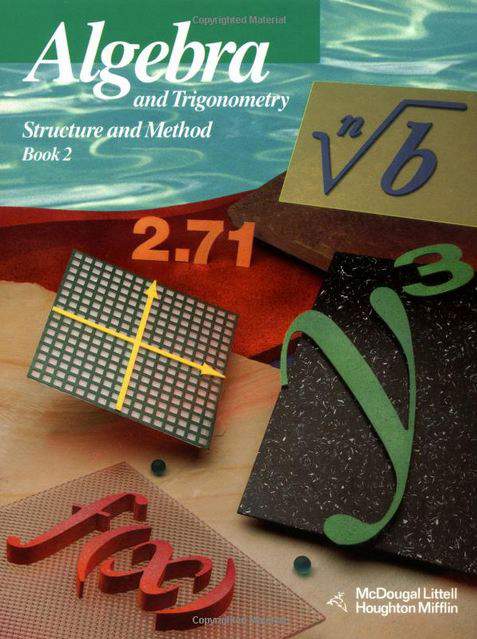Connecting...

For more information, please see full course syllabus of Algebra 2
Algebra 2 Expressions and Formulas
In this lecture, you'll learn about monomials and polynomials specifically on how to find the degree of each, understanding what constant and coefficients are, learn about powers, and understand the different polynomials and their terms. The best way to evaluate an expression is by following the standard order of operations which is by calculating exponents first, then, multiplying and dividing from left to right, and finally adding and subtracting from left to right. Be cautious to work within parentheses first as parentheses always override the standard rules. And be careful when doing addition and subtraction with different terms because not every two terms can be added. The video examples will give you more chances to practice evaluating the algebraic expressions.
Share this knowledge with your friends!
Copy & Paste this embed code into your website’s HTML
Please ensure that your website editor is in text mode when you paste the code.(In Wordpress, the mode button is on the top right corner.)
- - Allow users to view the embedded video in full-size.









































 Carleen Eaton
Carleen Eaton Grant Fraser
Grant Fraser
 Answer Engine
Answer Engine




6 answers
Last reply by:
Fri Jul 29, 2022 11:15 AM
Post by Thomas Lyles on July 7, 2020
"A monomial is simply a single monomial."
Yikes. That's about as poor a definition of anything as I've ever heard.
Teachers should really be more careful with their words. Language tends to be important when, you know, trying to teach stuff, especially when one is getting paid to do so.
:/
Do y'all ever go back and try to edit these videos?
1 answer
Last reply by: Alex Leung
Sun Jun 28, 2020 9:37 PM
Post by Gull Aqa Nazari on June 4, 2020
what is the difference between terms and monomial ?
1 answer
Wed Apr 19, 2017 5:54 PM
Post by Anna Kopituk on April 17, 2017
Hi Dr. Eaton,
Thank you for making Algebra understandable. I am a homeschool student and my Mom is wondering how to test me on this information? Do you have tests available or know how we can find tests that fit your syllabus/curriculum?
Thank you,
Wesley
0 answers
Post by Khanh Nguyen on October 19, 2015
Practice Question 8 is wrong, the answer should be -3, not 3.
0 answers
Post by julius mogyorossy on July 14, 2013
You should say terms are anything separated by +, - or =, the difference between terms and factors really confused me at first, the different rules.
2 answers
Last reply by: Lexlyn Alexander
Thu Oct 23, 2014 5:37 PM
Post by Manika Marwah on May 30, 2013
does n denote power eg power of 3 is 6 so n=6??
0 answers
Post by Aniket Dhawan on May 5, 2013
hi
3 answers
Last reply by: Kyle Letterer
Tue Jul 10, 2018 5:52 PM
Post by Joyce Andrews-McKinney on January 24, 2013
I like E.com fairly well. I use this site as a guide to teach math to my home schooler. I am confused as to why this site teaches Algebra 11 BEFORE teaching Geometry when all other schools and programs teach Geometry then Algebra 11. Does it matter which follows Algebra 1? I really need a response. Thanks everyone.
3 answers
Last reply by: Jonathan Aguero
Fri Dec 7, 2012 3:00 PM
Post by Sheila Mckenzie on April 29, 2012
When you were converting degrees to celcius. Why did you inverse the fraction on both sides from 9 over 5 to 5 over 9. Is it because its a fraction and the rule is when your multiplying a fraction on both sides you inverse the numbers? Please advise.
3 answers
Last reply by: Yih S.
Fri Aug 5, 2016 2:12 PM
Post by javier mancha on August 23, 2011
do the exponents, get added as a degree ??